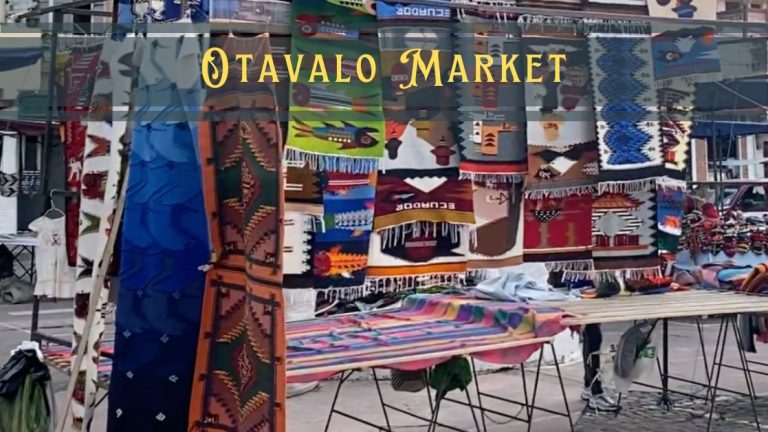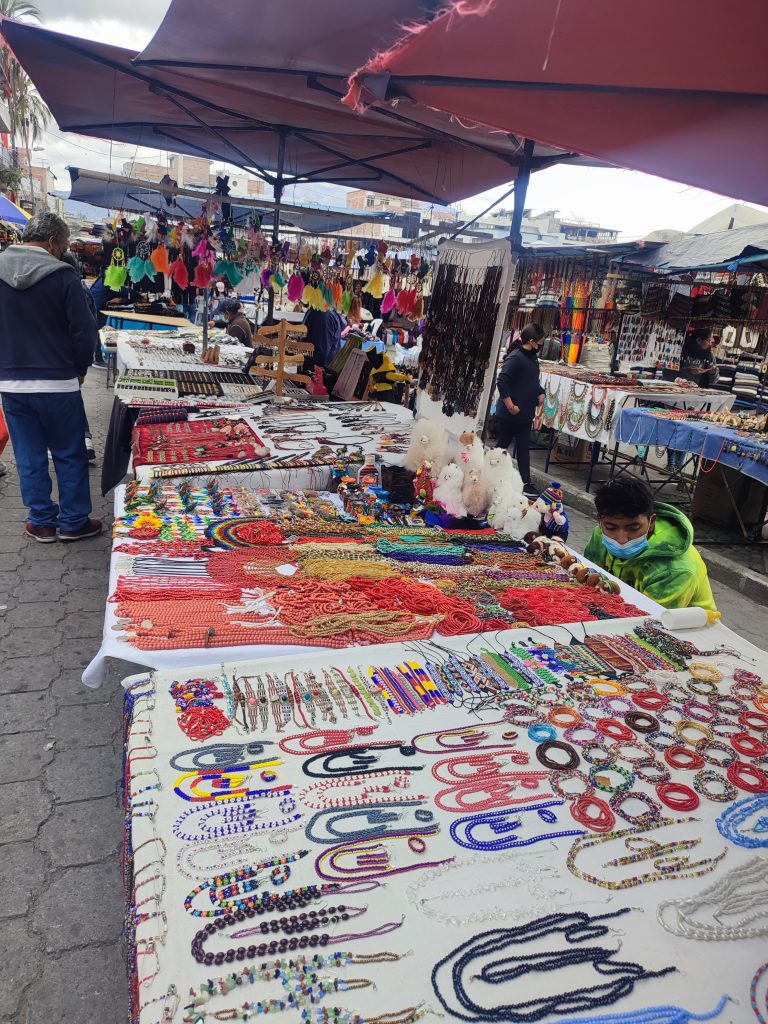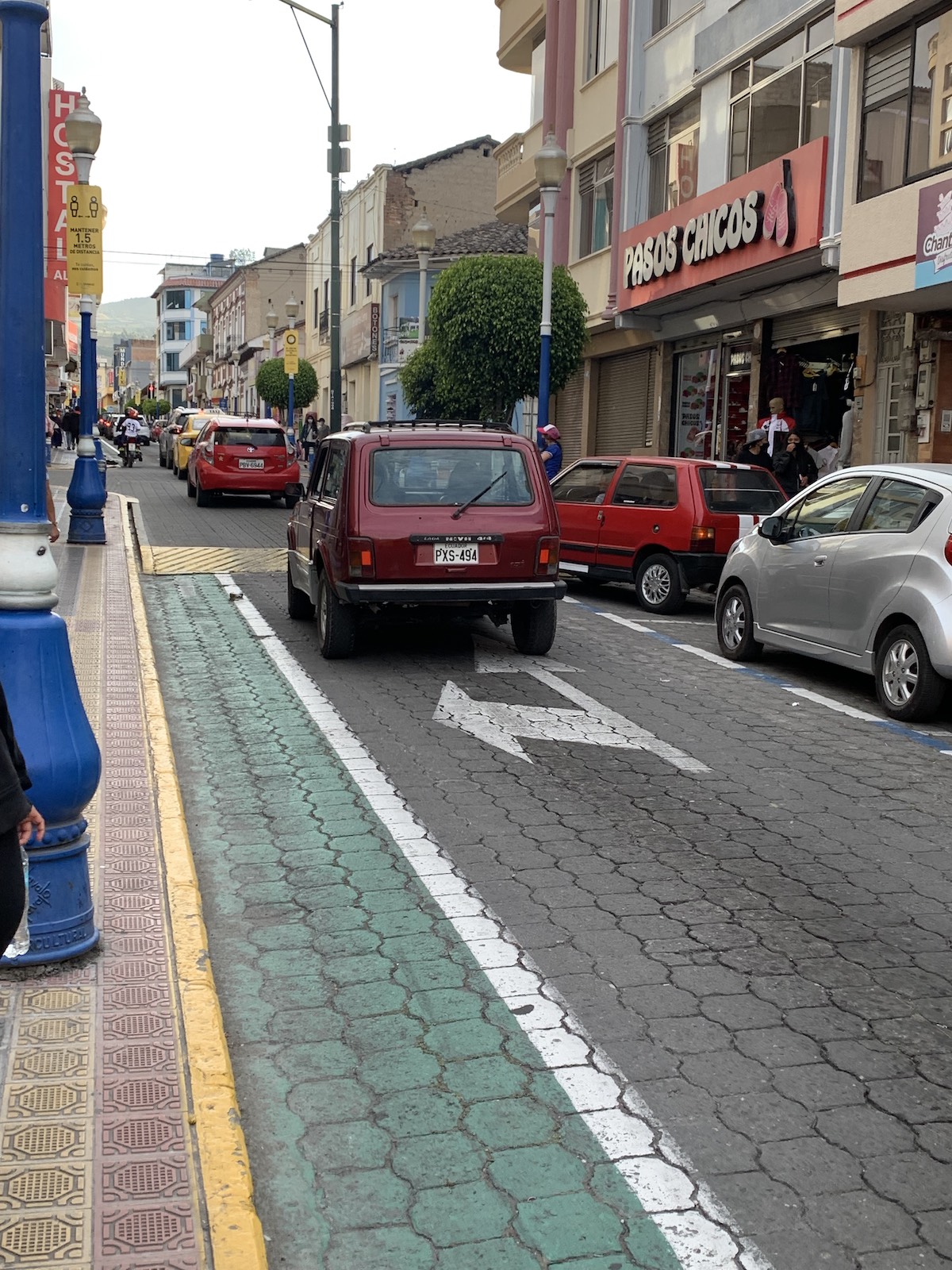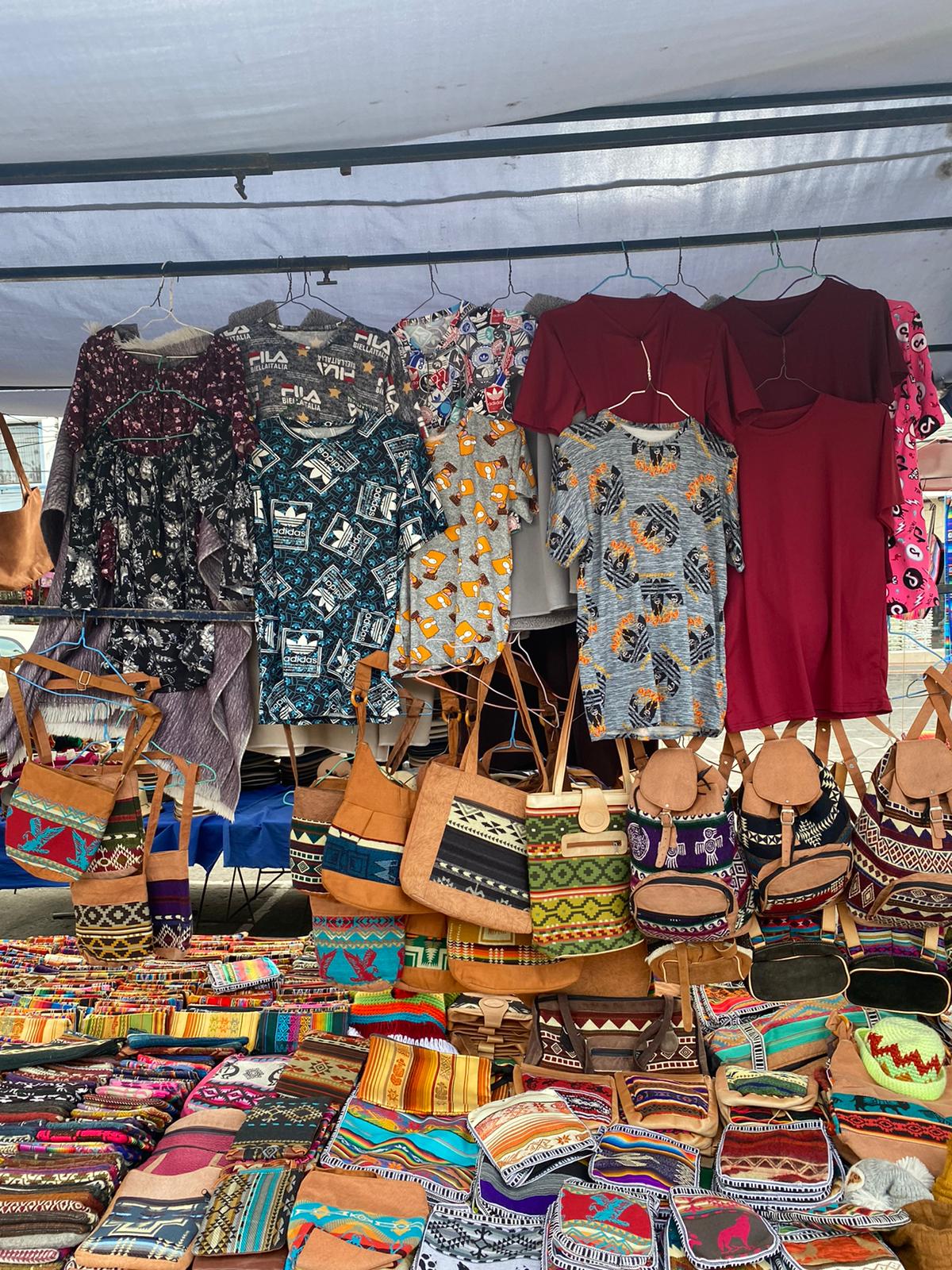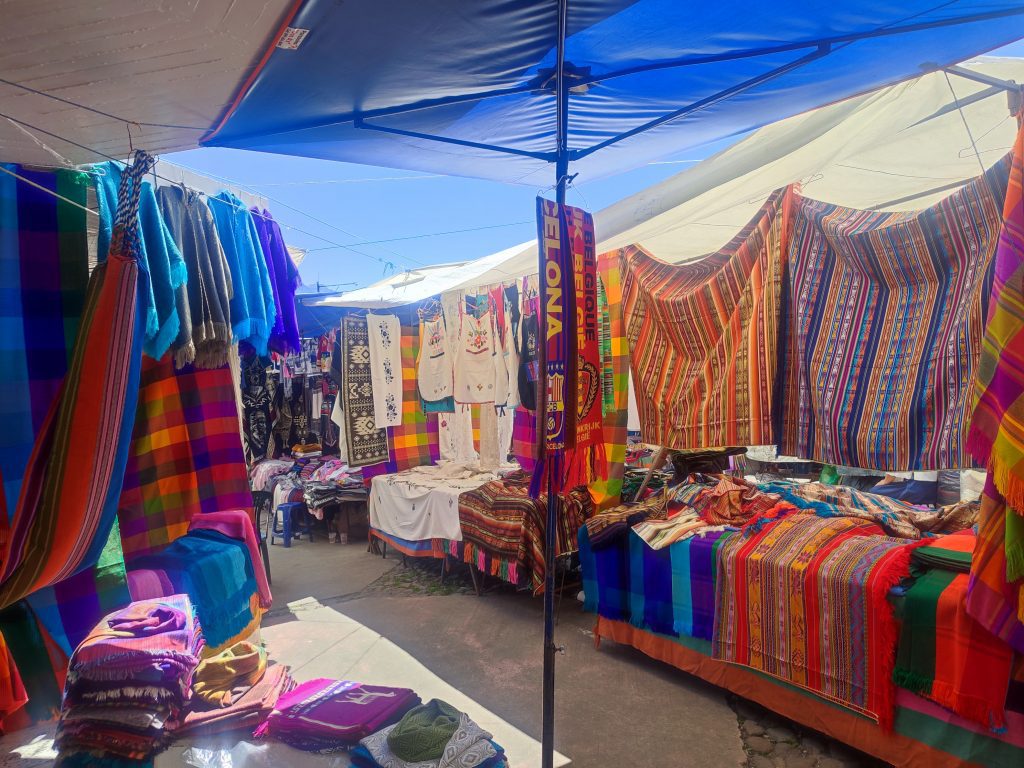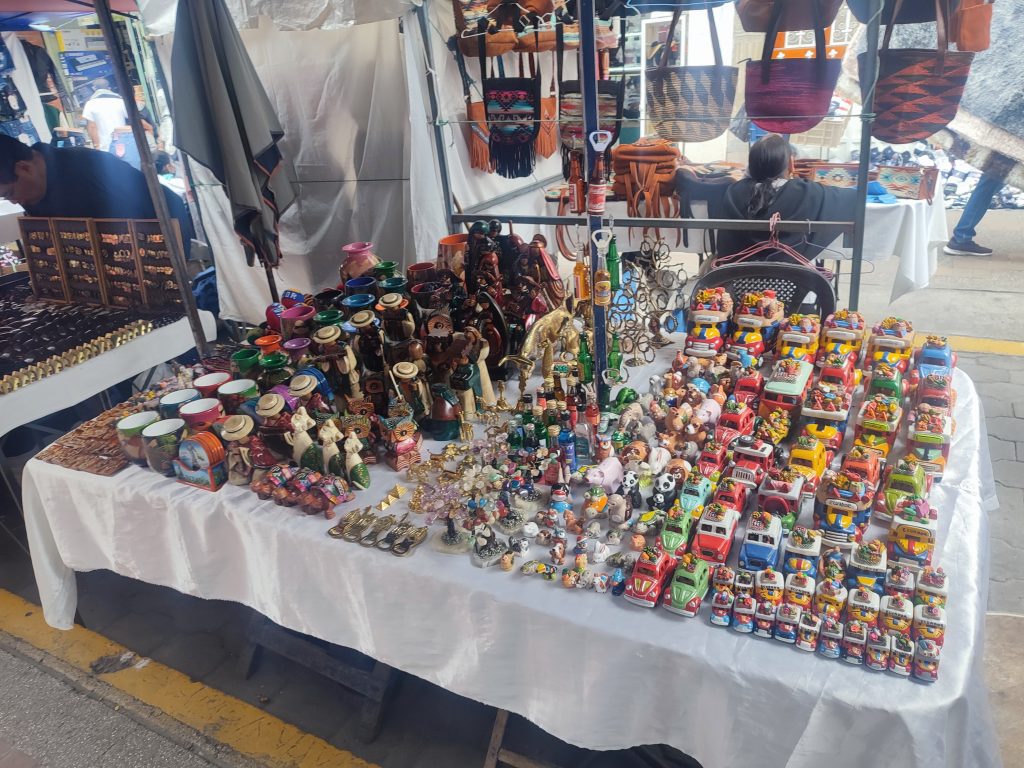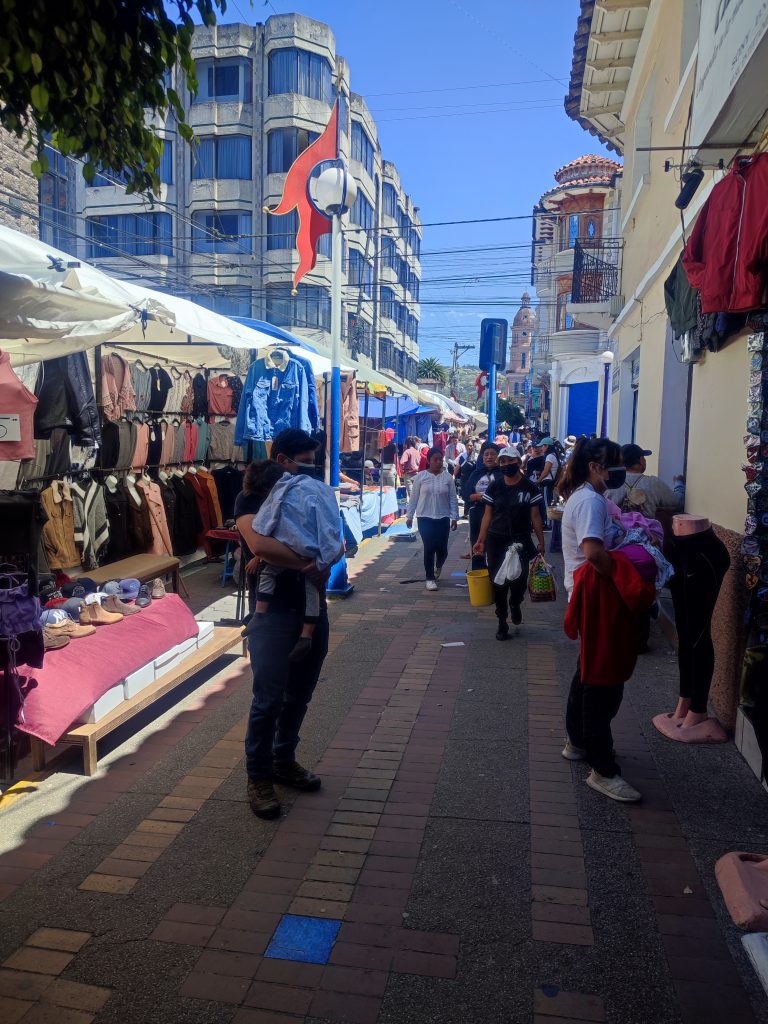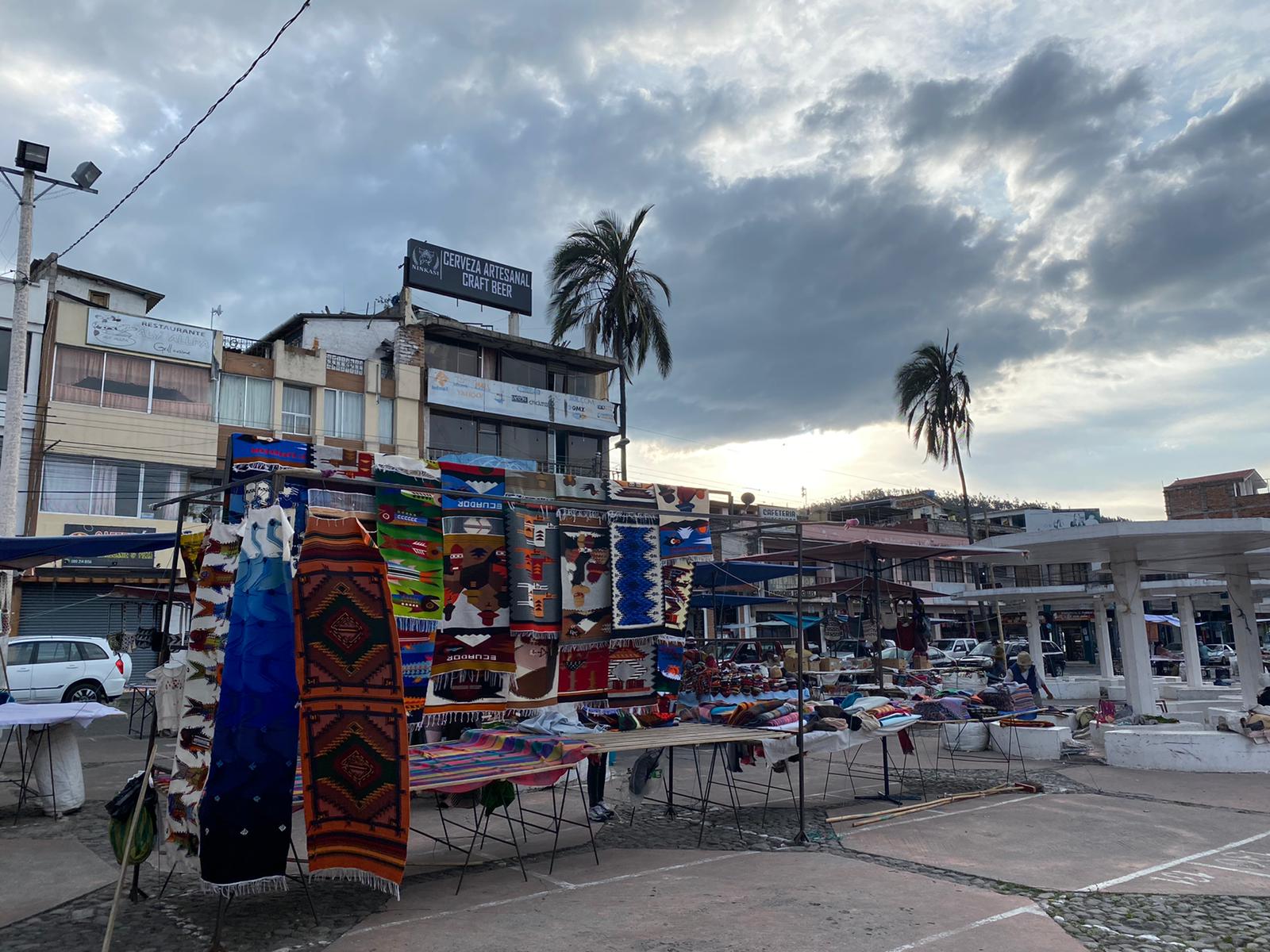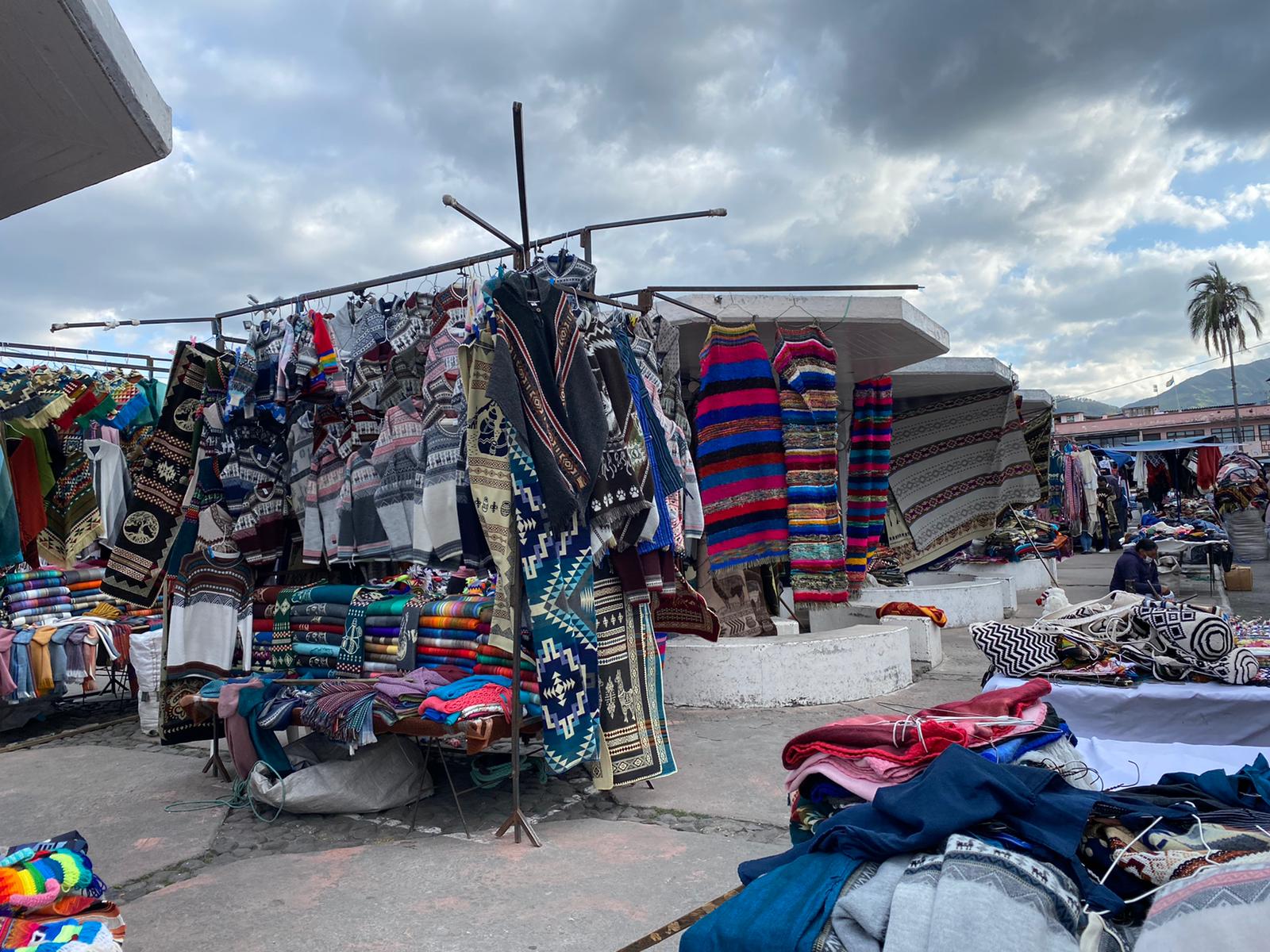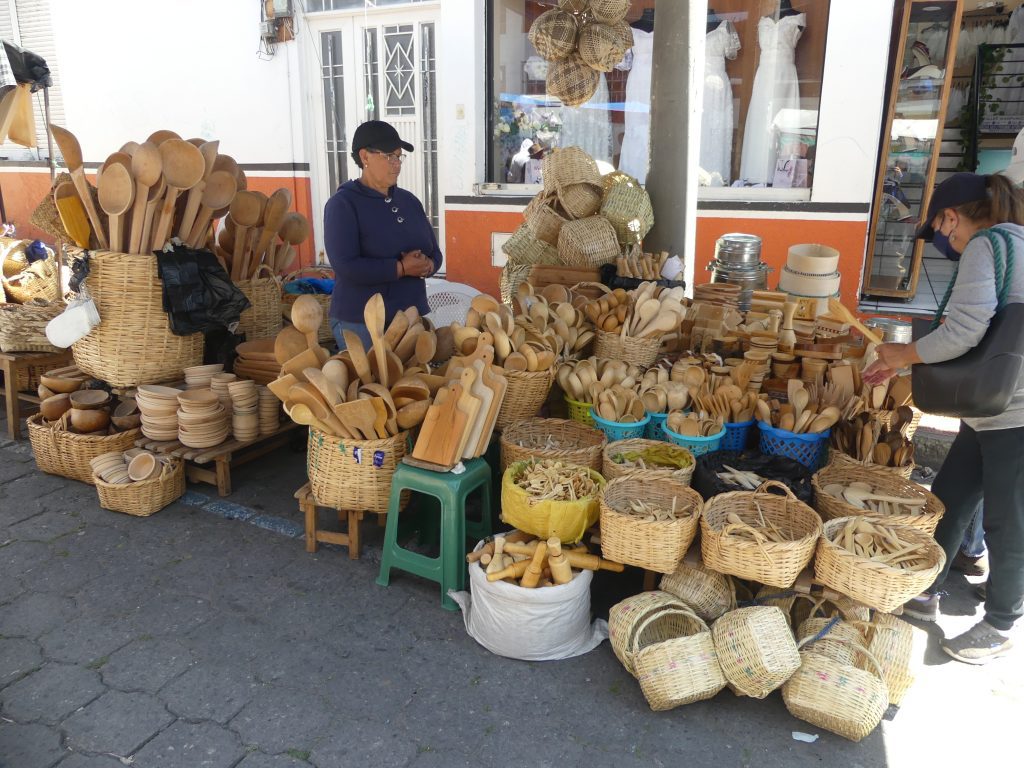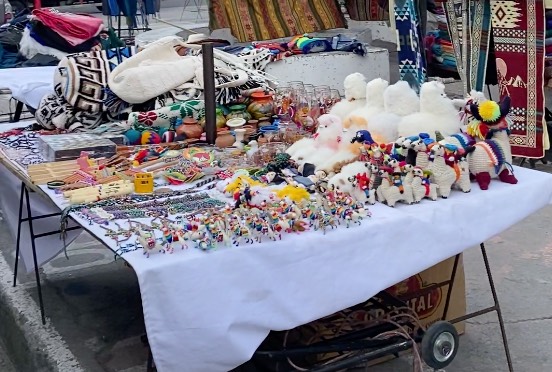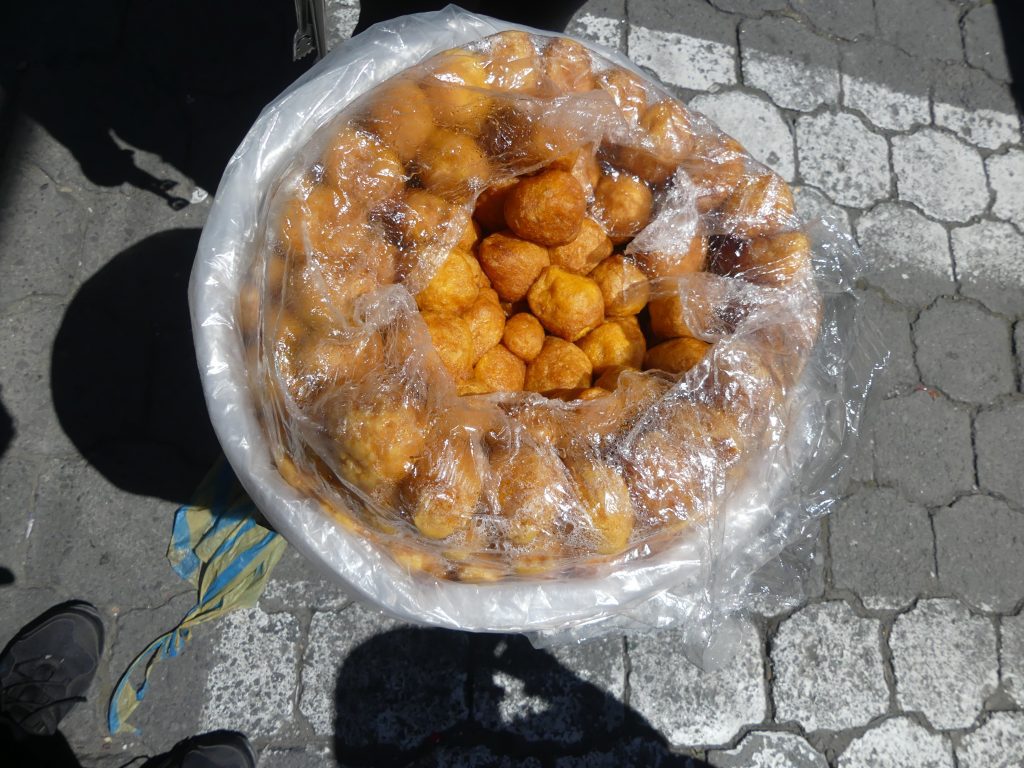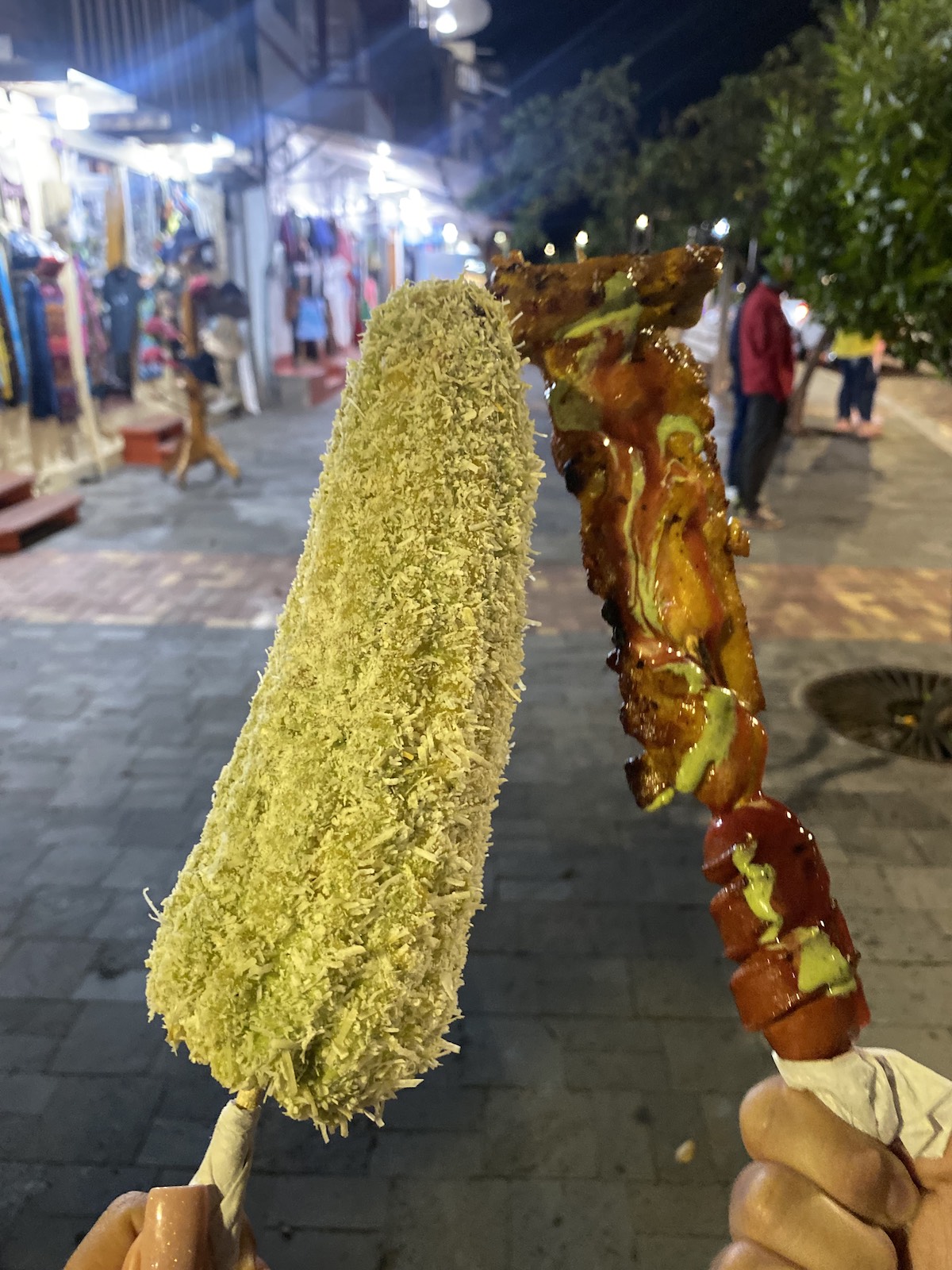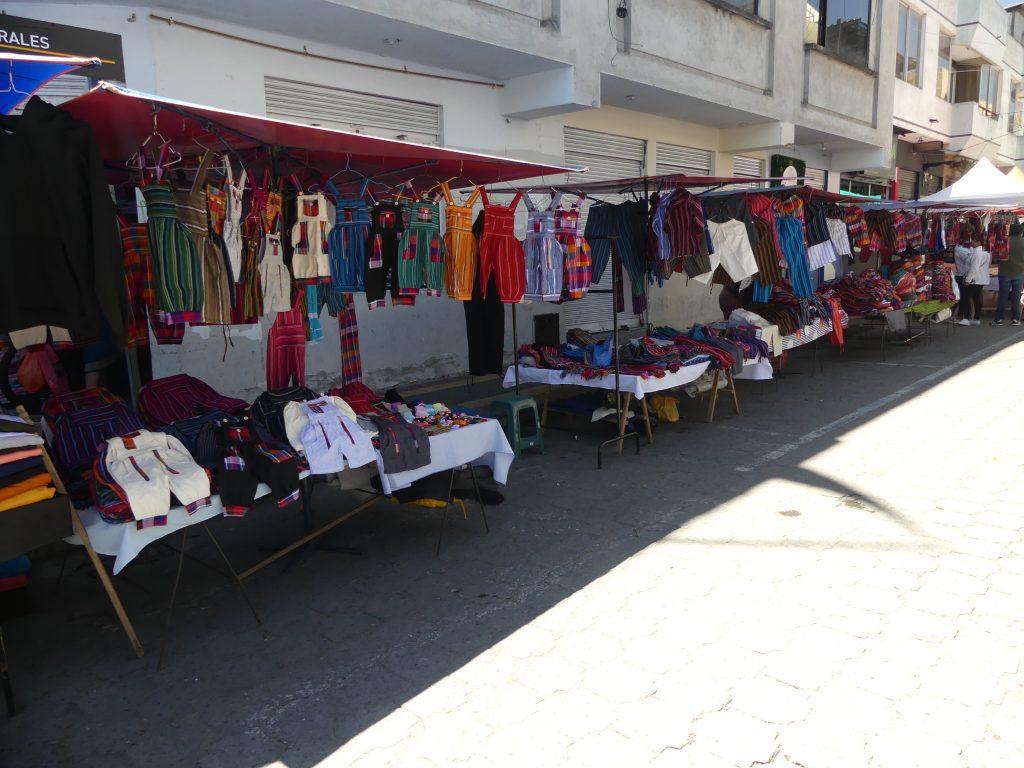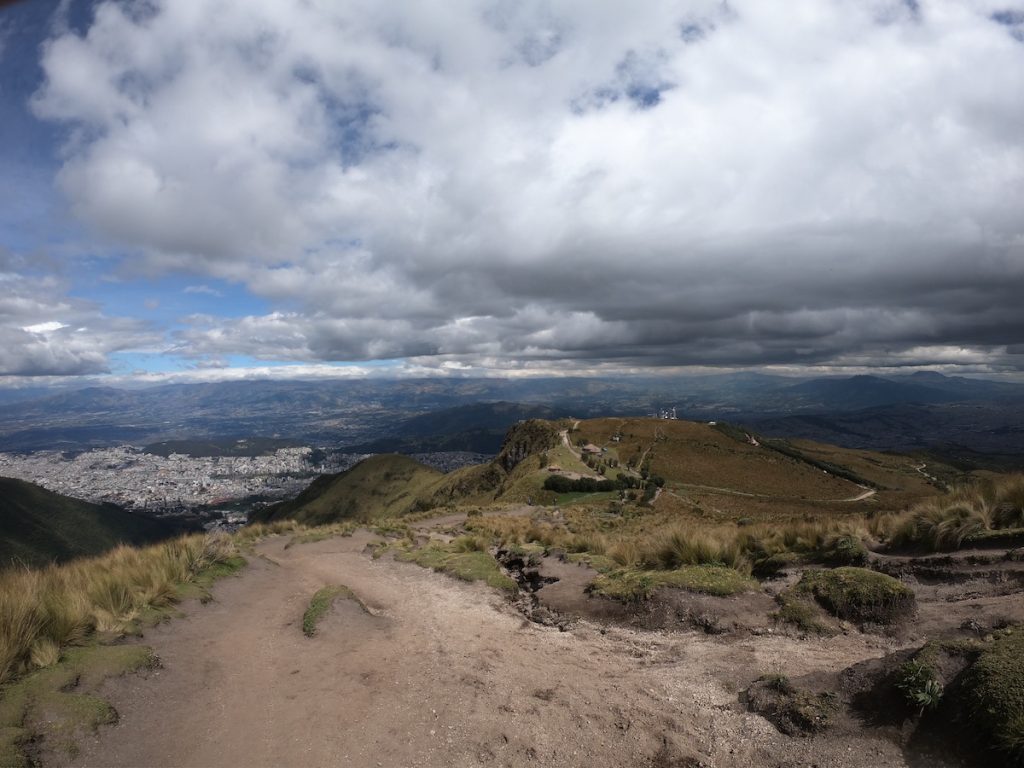Otavalo is a charming town nestled in Ecuador’s Andean Highlands, just a two-hour drive north of Quito. It’s best known for hosting the largest and most famous indigenous market in both Ecuador and South America.
When we arrived, we were immediately struck by the vibrant energy of the market. Otavalo’s rich indigenous culture is beautifully reflected in the wide array of colorful textiles available—from ponchos to jumpers and everything in between. But it’s not just the textiles that draw you in; the market is also bursting with the vibrant colors of fresh fruits and vegetables, grown in the rich volcanic soil of the surrounding highlands.
Continue reading to discover more about the Otavalo market. I’ll be also sharing some tips for an amazing Otavalo market experience.
Looking back, I wish I’d known the best way to experience Otavalo Market – from timing our visit to avoid crowds to finding authentic alpaca products and getting the fairest prices. Skip the tourist traps and get a FREE personalized Ecuador trip quote from my trusted local experts. They’ll help you plan the perfect market visit along with other amazing destinations. Your booking helps support both this blog and local Ecuadorian communities.
Plan perfect trip to Ecuador & Galapagos
I spent countless hours researching everything about traveling to Ecuador, and I created this blog for fellow travel enthusiasts who want the best, most reliable information. But if you want to save time, we’ve partnered with the top local agency to plan your dream trip.
How to Get to Otavalo Market
Since Otavalo is so close to Quito, many tour companies offer half-day or full-day excursions to the market. These tours include private transportation both ways, making it easy to explore even if you’re short on time. We noticed that Saturdays are the most popular day for these trips, as the market is in full swing, but you can also book tours on weekdays if you prefer a quieter experience.
However, if you want to go on your own, you reach the Otavalo market from Quito.
We opted to take the bus from the Carcelén terminal in Quito, which was quite straightforward. A one-way ticket to Otavalo costs only $2.50, and the journey takes around two and a half hours. If you’re an early bird, it’s definitely possible to visit Otavalo as a day trip from Quito. We started our day early and found that we had plenty of time to explore the market and soak in the vibrant atmosphere before heading back to Quito in the evening.
Best Time to Visit Otavalo Market
While many people opt for a quick day trip to Otavalo, I personally prefer arriving on a Friday afternoon or evening, staying overnight, and getting up early on Saturday to experience the market. This way, we could beat the crowds that pour in from Quito on day trips and enjoy a much more peaceful morning.
There’s something special about waking up in Otavalo, having a leisurely breakfast, and then strolling through the market stalls as they open up. It was such a perfect way to ease into our weekend adventure, taking our time to browse without the hustle and bustle that picks up later in the day.
Plaza de Ponchos
The Otavalo market is centrally located in the heart of town at Plaza de Ponchos. What I loved most was how easy it was to get around—everything is just a short walk away, whether it’s restaurants, cafés, the bus station, or nearby hotels.
The town is incredibly walkable, and even if you’re a first-time visitor, you won’t have any trouble finding your way to the market. There are plenty of signs pointing you toward Plaza de Ponchos, making it super convenient to explore the area on foot.
You can see more in my video:
Otavalo Market Days
Saturdays and Wednesdays are the liveliest days to visit the Otavalo market, with Saturday being the busiest of all. On Saturdays, the market expands beyond the Plaza de Ponchos, spilling into the surrounding streets and filling much of the town. It’s truly a sight to see the market in full bloom, bustling with energy and color.
While we visited on a Wednesday, which was still vibrant, I would recommend planning your visit on a Saturday if you can. That’s when you’ll get the most out of the experience. However, if your schedule doesn’t allow for a weekend visit, don’t worry—the market is open every day, so you’ll still have plenty of opportunities to explore and shop.
What to Buy in Otavalo Market
Otavalo Textiles
Ecuador is celebrated for its alpaca wool garments, which are known for their incredible softness. The indigenous Otavalo people have been weaving since pre-Inca times, and this long tradition is how the market originally began.
However, here’s something we quickly learned during our visit: despite the labels, you’re not likely to find many genuine alpaca products at the Otavalo market. Most of the textiles sold here are actually made from sheep wool, synthetic fibers, or blends. So, while the items are still beautifully crafted, it’s good to keep in mind that what you’re purchasing might not be the genuine alpaca wool you were expecting.
Have questions about your upcoming Galapagos trip? Join my Galapagos Reddit community and ask other travelers who recently visited the islands. Get up-to-date tips, real experiences, and honest advice from other travelers (I ban tour agencies and resellers).
Here’s how to know if a product is real alpaca wool:
- Genuine alpaca is not cheap! If a sweater costs less than $100, it is most likely not made of alpaca.
- Alpaca wool is thicker than wool from sheep or synthetic fibers.
- Alpaca wool is softer and less scratchy than sheep’s wool.
Clothing

The Otavalo market is truly a paradise for those looking to explore Ecuador’s famed textiles. A large portion of the stalls is filled with clothing, which showcases the beautiful craftsmanship of the indigenous people.
We found ourselves surrounded by rows of alpaca sweaters and scarves, each available in a wide range of designs, colors, and patterns. From cozy ponchos to chic hats, the market offers everything you could imagine. Whether you’re after a stylish modern sweater or an intricately embroidered indigenous shirt, there’s something for every taste here. I personally enjoyed browsing through the diverse selection, trying to pick out unique pieces to take home as souvenirs.
Bags
The Otavalo market is also a treasure trove for purses and bags. We came across beautifully handmade wool and leather purses, alongside colorful backpacks and satchels crafted from patterned cotton weaves. These items not only showcase the vibrant Otavalo textile tradition but also serve as practical souvenirs.
In fact, I found myself in need of an extra bag after indulging in a bit too much shopping! Picking up one of these affordable satchels was a perfect solution to carry all the market treasures we collected. If you plan on doing a lot of shopping, I recommend grabbing a sturdy bag from one of the stalls—you won’t regret it!
Panama Hats
One of the most delightful finds in Otavalo is the Panama hat, which, despite its name, hails from Ecuador. Although Cuenca is often considered the heart of Panama hat craftsmanship, you can find the same high-quality hats in Otavalo without the steep price tag or the aggressive sales tactics. We couldn’t resist picking up a couple for ourselves as classic souvenirs.
Strolling through the market, you’ll also notice how passionate and proud Ecuadorians are about their traditional attire. Many indigenous women don elegant outfits with white blouses featuring intricate multicolored embroidery and flowing black skirts. These beautiful garments are not just for show—they’re part of everyday life. And yes, you can buy similar traditional pieces at the market. I was truly amazed by the vibrant culture reflected in every thread and stitch.
Jewelry and Accessories
Jewelry enthusiasts will love exploring the endless variety in Otavalo’s market. Whether you’re looking for affordable trinkets or more intricate pieces, there’s something for everyone. I couldn’t help but admire the beautiful silver and semi-precious stones like turquoise that were on display, along with the colorful woven bracelets that seemed to pop with every shade of the rainbow.
One of the most distinctive items you’ll find are the traditional gold beaded necklaces and red beaded bracelets worn by Otavaleño indigenous women. These pieces carry deep cultural significance but have also become popular souvenirs, now available in a range of colors. I was tempted to buy a few as keepsakes to remember the vibrant spirit of Otavalo.
Souvenirs
If you’re on the hunt for affordable souvenirs, Otavalo is definitely the place to be. We found a great selection of items like t-shirts, keychains, mugs, and other classic keepsakes. It’s a fantastic spot to pick up gifts for friends and family, especially if you take the time to bargain a bit.
We noticed that prices here were noticeably lower than those in the artisan markets of Quito or other major cities. By negotiating with the vendors, we were able to get some great deals — which only added to the fun of the experience!
Fruits, Vegetables, and Other Food Items
The fresh food section at the north end of Plaza de Ponchos is definitely worth a visit. We strolled through rows of colorful fruits and vegetables, many of which were completely new to us. It was fascinating to see the wide variety of produce grown in Ecuador’s fertile soil.
Exploring this part of the market gave us a deeper appreciation of Ecuadorian cuisine. We even picked up some fresh bread and spices to try out later. If you’re a foodie or just curious about local flavors, don’t miss out on this vibrant corner of the market!
Street Foods
We couldn’t resist trying some of the street food during our visit. The smell of grilled bananas and roasted corn drew us in immediately. We sat down at one of the small setups near the north end of Plaza de Ponchos and enjoyed a simple, hearty plate of stewed figs with cheese on toast. It was both sweet and savory, a combination that pleasantly surprised us.
The food here is incredibly affordable, with most plates costing just a few dollars, yet they’re so filling and packed with flavor. If you’re in Otavalo, don’t skip the chance to try these local treats — it’s an authentic taste of Ecuador that you won’t forget!
Trust me, there’s so much more to Otavalo than just shopping – I learned this after rushing through on a day trip! Want to truly experience the rich indigenous culture and highland traditions? Get a FREE expert itinerary from my recommended local agency who can help you plan the perfect visit, including where to stay and what to explore beyond the market. Your booking supports this blog and local Ecuadorian businesses.
Otavalo Market Tips
- The market is open daily beginning at 7:00 a.m. up to 6:00 p.m. More sellers come during the official market days which are Wednesdays and Saturdays. Saturday is the busiest day in the Otavalo market.
- Get up early to catch the best prices before the tour groups arrive. When the buses arrive, prices tend to increase.
- As with any market, you should bargain for the price you are provided. Depending on how high the trader starts, you may normally receive 30-50 percent off the price.
- Remember the two rules of haggling: 1) the goal is to acquire a fair price that both parties are satisfied with, and 2) you’ll always get better prices by joking and smiling than by being forceful.
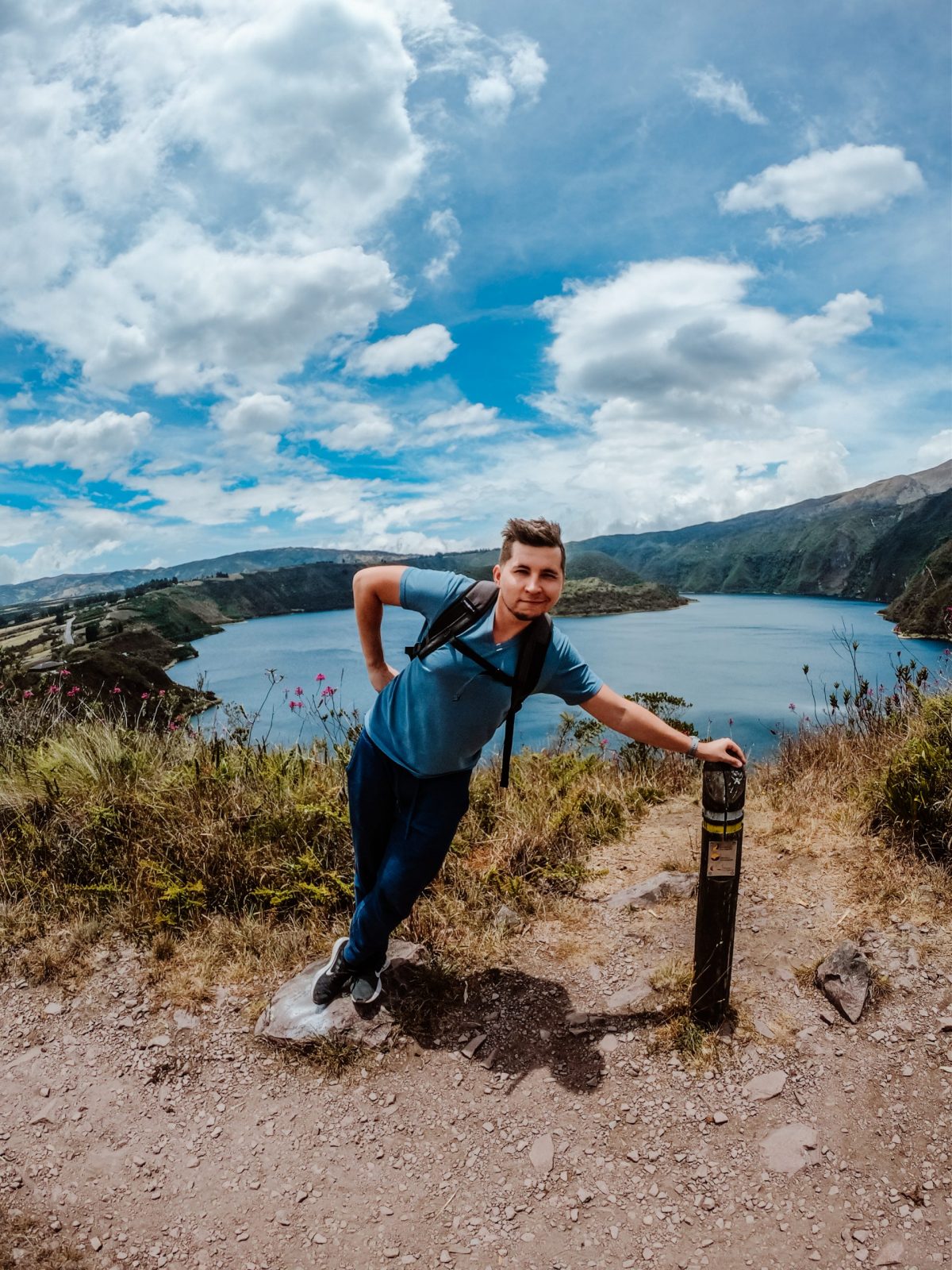
Planning trip to Ecuador?
My wife and I rented a car for 15 days and traveled from the northern part of Ecuador to the south, visiting amazing cities like Quito, Otavalo, Baños, Cuenca, and Guayaquil. Along the way, we explored iconic places such as Cotopaxi National Park, Quilotoa Lake, and many more breathtaking destinations.
Not many blogs cover traveling in Ecuador in detail, so I spent nearly three weeks creating this comprehensive Ecuador travel guide based on our trip. It’s packed with everything you need to know, and honestly, I consider it the best free travel guide about Ecuador out there.
If you’re planning a trip to Ecuador, don’t forget to use my link for discounted hotel prices through Booking.com. It’s a great way to support my blog while saving money on your accommodations!
Bottom Line
I couldn’t agree more! If you’re traveling to mainland Ecuador, especially Quito, the Otavalo market should definitely be on your list. The vibrant atmosphere, friendly locals, and unique crafts make it a highlight of any trip. While a half-day visit is enough to explore the essentials, staying overnight gives you that extra time to truly soak in the experience and explore the town at a relaxed pace.
For us, staying overnight was the best decision. It allowed us to start early before the crowds arrived, making it easier to interact with the vendors and explore the colorful stalls. It’s definitely a must-visit if you want to experience the cultural heart of Ecuador!
Plan perfect trip to Ecuador & Galapagos
I spent countless hours researching everything about traveling to Ecuador, and I created this blog for fellow travel enthusiasts who want the best, most reliable information. But if you want to save time, we’ve partnered with the top local agency to plan your dream trip.

